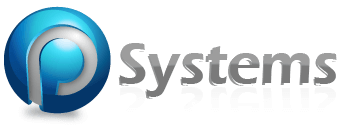
In today’s data-driven world, businesses rely heavily on accurate and actionable insights to make informed decisions. Business Intelligence (BI) plays a crucial role in transforming raw data into meaningful information. Among the various tools and techniques within BI, dashboards and scorecards stand out as powerful visualization tools that provide at-a-glance insights. In this blog, we will delve into the world of BI dashboards and scorecards, exploring their benefits, features, and how they revolutionize data-driven decision-making.
- Understanding Dashboards:
- A BI dashboard is a visual representation of data that consolidates key metrics, KPIs (Key Performance Indicators), and other relevant information on a single screen. It offers a comprehensive view of an organization’s performance, allowing decision-makers to monitor trends, identify patterns, and gain actionable insights.
- Customizable Widgets: Dashboards provide flexibility, allowing users to choose and arrange widgets that display specific data elements such as charts, tables, graphs, and gauges.
- Real-Time Data Updates: Dashboards can pull data from various sources and update in real-time, providing stakeholders with the most up-to-date information for decision-making.
- Interactive Elements: Users can interact with dashboards by applying filters, drill-down, and drill-through functionalities, enabling them to explore data in more detail and uncover hidden insights.
- Visualizations: Dashboards utilize visually appealing charts, graphs, and infographics to present data in a digestible format, facilitating quick comprehension and analysis.
- Harnessing the Power of Scorecards:
- Scorecards are another valuable component of BI, focusing on measuring and tracking performance against predefined goals and targets. Scorecards provide a structured approach to evaluating key business areas and enabling informed decision-making. Key elements of scorecards include:
- Key Performance Indicators (KPIs): Scorecards identify and track specific KPIs that align with the organization’s strategic objectives. These KPIs act as measurable indicators of success or areas that need improvement.
- Performance Targets: Scorecards establish performance targets or benchmarks for each KPI, helping organizations set realistic goals and measure progress effectively.
- Cascading Metrics: Scorecards can be cascaded from the organizational level down to individual departments or teams, ensuring alignment and accountability throughout the organization.
- Performance Trend Analysis: Scorecards enable the analysis of performance trends over time, identifying areas of improvement or potential issues before they become critical.
- Benefits of Dashboards and Scorecards:
- Implementing dashboards and scorecards within your BI strategy can yield numerous benefits for your organization:
- Enhanced Data Visibility: Dashboards and scorecards provide a consolidated and visual representation of critical data, making it easier for stakeholders to understand complex information at a glance.
- Improved Decision-Making: By presenting relevant information in a clear and intuitive manner, dashboards and scorecards empower decision-makers to make informed and timely decisions.
- Increased Operational Efficiency: Real-time data updates, interactive features, and customizable widgets allow users to analyze data efficiently, identify bottlenecks, and take proactive actions.
- Alignment with Strategic Objectives: Scorecards help align departmental and individual goals with the organization’s strategic objectives, fostering a performance-driven culture.
- Effective Communication: Dashboards and scorecards serve as communication tools, enabling stakeholders to share and discuss insights based on accurate and consistent data.
In the age of data, leveraging the power of dashboards and scorecards in your business intelligence strategy is paramount. These visualization tools facilitate data comprehension, aid in decision-making, and drive organizational performance. By implementing dashboards and scorecards effectively, businesses can unlock the full potential of their data, gaining a competitive edge in today’s dynamic market.
Remember, the success of dashboards and scorecards lies not only in their implementation but also in continuous monitoring, analysis, and refinement to ensure they remain relevant and aligned with evolving business needs. Embrace the power of data visualization through BI dashboards and scorecards, and witness the transformative impact on your organization’s decision-making capabilities.




